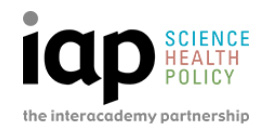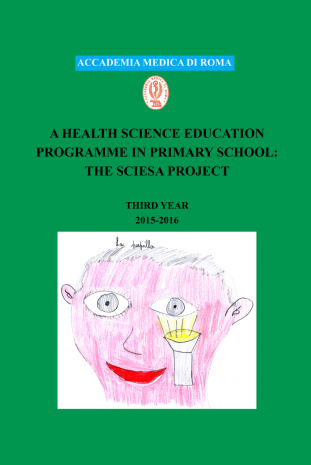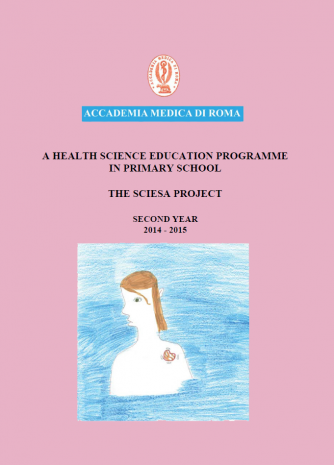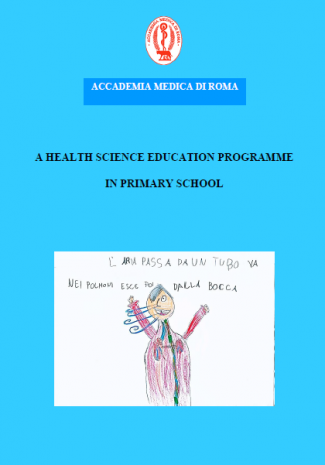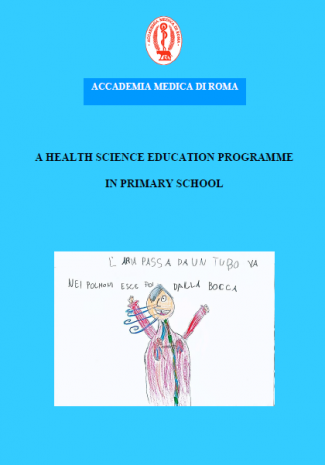Health Science Education in Compulsory Primary Schools
Overview
February 2017 - IAP for Health joins IAP Science Education Programme
January 2016
In 2011 the Accademia dei Lincei established a working group to elaborate a health education programme to be included in the curriculum for compulsory primary schools.The initiative is the result of a careful analysis of the Italian epidemiological profile, similar to that of many countries with a high social and economic development, characterized by a progressive increase of demographic and health indicators.
The project has obtained financial support from IAP and IAMP. The project has a five years duration, which corresponds to the duration of compulsory primary school in Italy. The funding obtained from IAP & IAMP is intended to cover the second year of activities. The activities of the first year (2013) have been covered by a financial contribution generously provided by the Fondazione Roma - Terzo Settore (FRTS) to the Accademia Medica di Roma. This financial support, with forward-thinking attitude, has been extended by the FRTS until June 2014, thus allowing to complete the first year of teaching.
The SCIESA group
The project has been elaborated by the SCIESA group (SCIESA is for SCIEnze della Salute, i.e. Health Sciences) starting from January 2012. In October 2013 the teaching activities have been started in four “Class One” of the five-year primary compulsory school’s curriculum. The Roman School assigned to develop the project by the Ufficio Regionale Scolastico del Lazio (URS Lazio), was the Istituto Comprensivo Settembrini, Rome. Two of the four classes, belonging to the via Asmara’s plexus are attended by children from Italian and non-EU middle-to-low income families, while the other two belong to the of Via Novara plexus and on the average are attended by children from middle-tohigh income families. Pupils are 6 years old. The SCIESA group is formed by a fellow of the Accademia Nazionale dei Lincei (a morphologist, who also acts as project coordinator), an epidemiologist, a biologist with teaching experience in primary schools, a physiologist, a paediatrician, an expert in science education and a childhood neuropsychiatrist.
Actions carried out:
1. Elaboration of the teaching programme
2. Identification of the “core experiences” on which to set the teaching activities.
In keeping with the provisions of the project the SCIESA group has elaborated three teaching modules planned the first year which have then been used for classroom work. The education modules approach basic, elementary concepts of ‘functional morphology’ of some of systems of the human body (musculoskeletal, respiratory and digestive systems) that can be perceived through simple experiments of perceptible anatomy, elaborated for children that are just literate. In this context, it has been considered useful to first introduce first the concept of "environment" with the aim to emphasize the relevance, for the purpose of health promotion, of the continuous interchanges that take place between individuals and the physical and social environment that surrounds them. The teaching method adopted to convey the content of each of the modules mentioned below, has been strictly inductive, based on the elaboration of personal experiences of the kids and on their active participation in simple experimental activities.
The first module is ‘Us and the Environment’ (relationships between the individuals and the physical and social environment in which they live). The module is aimed at making pupils aware that a state of well-being, depends upon individual factors but also on the relations established with the environment that surrounds us, i.e. the places where we live and the people with whom we interact.
Experiences pertaining to the pupil' lives that they were asked to recall to elaborate the inductive training strategy have been the environmental scenarios of play, family and school. Major aims of the module are: i) to have acquired the general concept of environment as a set of places where you live and interact with other people; ii) to become aware that each of us lives in constant relation with the environments that surround us; iii) to realize that the state of well-being depends not only on individual factors but also on environmental conditions; iv) to become aware of the possibility that each one has to improve the quality of his life by taking care of himself and by establishing positive relations with the environment that surrounds him.
Teaching content: i) the concept of environment; ii) the characteristics of the environment; iii) the wellbeing conditions.
The second module is ‘ The human body and the movement’ (i.e. the movement in relation with the musculoskeletal system and the general conformation of the human body).
Experiences pertaining to the pupils' lives to have been the body mastery in space, the manipulative ability and fine motor skills of the children. The basic theme of the module is the movement, an experience particularly close to the sensitivity of children who are usually brought to interpret it positively and with pleasure in terms of gaming and sports. This allows to solicit the interest of the pupils with playful arguments and with continual references to games of movement (circle, etc..) and to their favorite sports.
Major aims of the module are: i) to know of the general structure of the human body and to be able to distinguish the basic parts (head, neck, trunk, etc..); ii) to know the general function of the bones, of the joints, of the skeleton, the muscles.
Teaching content: i) the general shape of the human body; ii) the bones; iii) the joints; iv) the skeleton, v) the muscles and the tendons, the movement.
The third module is ‘Relations and exchanges between individuals and environment’ (what goes in and what comes out). The module is divided into two sections dealing with " the journey of the air " (respiratory tract) and "the journey of food and beverages" (digestive tract), respectively. The module is aimed to make aware the pupils, although in elementary terms, of the exchanges that continuously occur between the human being and the environment, and of their relevance for the individual survival. Teaching tools are guided observations of personal experiences and active participation to simple experiments. Experiences pertaining to the pupils' lives are food and water assumption, elimination of feces and urine (what comes in and what goes out). Major aims of the module are: i) to realize that humans continually takes some substances from the environment - such as air, food and water that are essential for survival, for carrying out normal life activities, and for body growth; ii) to learn in basic terms the paths of these substances (respiratory, digestive system) within the human body; iii) to learn in basic terms the modes of respiratory function (inhaling and exhaling air) and of the digestive system (digestion and absorption of food and water ingested); iv) to realize that human beings continuously release in the environment waste substances (breath, urine, feces). Teaching contents are: for the journey of the air i) breathing is a continuous event essential for life; ii) the entrance and transit of air through the respiratory tract; for the journey of food and water: i) the intake of food and water is essential for life; ii) the natural stimuli for feeding; iii) general structure and functions of the digestive tract.
3. Elaboration and production of teaching support materials
An evidence-based training programme has been developed specific for the each content of the three modules. The programme has been discussed with the teachers. The teaching support material for each module has been produced by the SCIESA group and provided to the teachers.
4. Training of the teachers
Teaching skills of the eight teachers involved in the project have been improved by a two-days training programme aimed at improve their abilities on evidence based teaching, and by monthly meetings with members of the SCIESA group focused on the operational aspects of the inductive method. Teachers were also provided with specific literature.
Planned follow-up actions. Evaluation of results obtained. Evaluation of the results, will be based on records that teachers have taken on a “day-to-day diary” and on “evaluation sheets” prepared for each teaching module. Class activities aimed to evaluate the ability of children to ask questions, to argue and to provide evidence of what they say, will also been planned. The involvement of the pupils parents will be considered through specific questionnaires. Elaboration and production of the modules and the teaching support materials for the second year - “Class Two” - which will start this coming September. Modules to be prepared are aimed to provide basic, elementary concepts of ‘functional morphology’ of the cardiovascular and nervous systems.
Difficulties and challenges occurred during the implementation of the program
A major problem faced during the first year has been the lack of familiarity of the teachers with the IBSE (Inquiry Based Science Education) method. Things should improve during the second year.
(Project Coordinator: Mario Stefanini, Accademia Nazionale dei Lincei, (e-mail: mario.stefanini@uniroma1.it).
